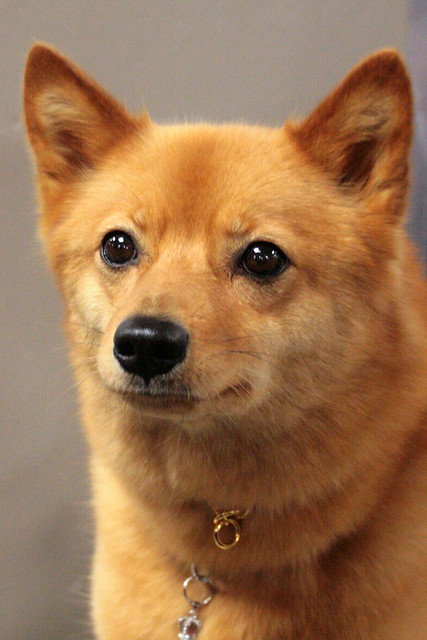 |
| Finnish Spitz (Photo credit: Wikipedia) |
The Finnish Spitz dogs have the typical "Spitz" appearance of a brushy coat with emphasis on the ruff at the neck and the bushy curled tail. They are always bright red to apricot in color. Finnish Spitz is easy to care for, the coat is dense and needs regular brushing but the hairs are straight and stiff and relatively short so is not difficult to keep free of mats. This type of coat is what is called "harsh" or "brush" and is always easier to deal with than a long coat that is "soft" in texture. It is a good looking dog, small upright ears and rather pointed face give this dog a fox-like appearance. By nature, the Finnish Spitz does not seem to have a "doggy" odor so it is a clean dog to keep in the household.
The breed is relatively free of genetic conditions and the incidence of hip dysplasia is rare although this should be checked before breeding. Their hunting repertoire includes everything from birds to bear and the dog is fearless as a hunter despite its small size of 15 to 17 inches. The Finnish Spitz "points" and usually barks to hold its prey at bay until shot by the hunter.
This is a dog that is considered aloof with strangers, not especially "cuddly" but actually very reserved in nature. Most Finnish Spitz dogs are extremely busy creatures and will give chase at the sight of any other creature, so a fenced yard or supervised walking is necessary at all times. Obedience lessons must be given from the beginning so that this dog will come when called. It is loyal but strong-willed and can be stubborn. As a house pet, it goes without saying that it will give voice too loud barking to strangers so it is an excellent watchdog. It also does love children and is very playful. Because this breed is highly curious about its surroundings and has an investigative nature, people who keep them in the house need to "puppy-proof" the environment.
|



